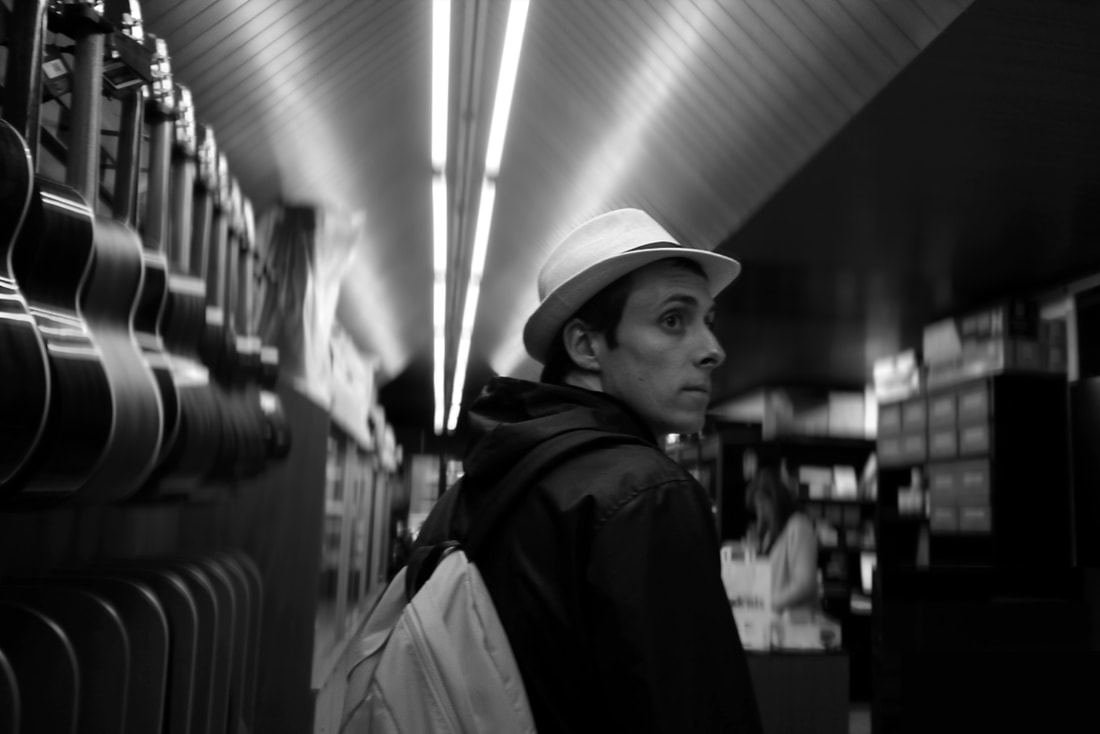Comments
The drop that became the sea
Russian composer Max Ananyev talks about the inspiration behind his new album The Way to the Ocean, and how he wanted to move away from the techniques often used by ambient composers, while staying close to the core of the ambient genre.

Max Ananyev: On my last album Communication, I paid a lot of attention to working with sound space, unusual timbres, effects and noises ... all of the things we love so much in the "acoustic ambient" genre that help the composer create soundscapes. But on The Way to the Ocean, I wanted the music to immediately immerse the listener in a new state, but without relying on all the usual techniques composers often make use of in this genre.
The Way to the Ocean has a similar sound to academic music – 12 simple and sincere pieces for classical guitar and mandolin.
In the measured style of playing, I’ve tried to put across the core idea of the ambient genre – a change in the listener’s state, the transition from thought to contemplation and the perception of time.
Could you talk about the inspiration behind The Way to the Ocean?
I’ve made two trips to the Atlantic Ocean in the past year, which made a huge impression on me and gave me a great deal of creative energy to record the album. Mankind tends to believe that it has control over everything in this world, but when you look at the sea and watch the waves break over the rocks as the tide rolls in, you understand that we’re deeply mistaken. We’re so focused on our problems, dreams and goals – mired in narcissism – that it prevents us from having an awareness of the real meaning of life.
There’s a very simple but profound metaphor that I really love – a drop of water, separated from the ocean doesn’t feel at one with it or receive energy from it. A separate drop thinks that it exists by itself, but when the drop falls into the ocean as rain, it realises its unity with the ocean, it remembers its true nature and regains all its energy. The drop and the sea merge into one. They are one and the same in essence – that is, water. A drop of water can take various forms – a drop, a snowflake, ice, a cloud of steam. The forms are different, but the essence is one.
If we compare God with the ocean and man with a drop of water, they have one common essence – water. And the statement that God created man in his own image is true. The concept of The Way to the Ocean therefore becomes about life itself – and my life in particular.
The track titles refer to aspects of my life. So, for example, my house in St. Petersburg is situated in a “Mosaic Yard”, and I was inspired to write “The Game in the Shade of a Large Maple” after seeing a man and his daughter playing games around a maple tree.
I’m also interested in numerology and was amazed to learn about the magical properties of the number 9. It contains all of the numbers from 1 to 8, and if you multiply any number by 9, then the sum of all the digits of the resulting numbers eventually forms the number 9. For example, 541 x 9 = 4,869; 4 + 8 + 6 + 9 = 27; 2 + 7 = 9. The number 9 is also the end of the cycle – an ascending infinite right-hand spiral. I tried to convey this in a minimalistic and cyclic structure of the composition.
The photos on the cover were taken by my friend Alisa Gill from St. Petersburg: http://cargocollective.com/alisagill. I’d like to thank her for allowing me to use them.
Could you describe how you recorded the album?
I recorded the album at home studio using classical guitar, mandolin, kalimba and strings. I wanted to create a very pure classical guitar sound with a wide spectral range and low level of white noise. In “Spring” and “Ocean Coast”, you can hear the soprano voice of my friend Maria Shulyakovskaya. Having grown up in a very musical family, Maria now studies at the St. Petersburg Conservatory and wrote all the vocal scores on the album.
On “Fickleness of Water” I used the 3rd bridge technique, which allows you to make a guitar sound similar to the sound of old, traditional plucked instruments, such as the Russian gusli and Chinese guzheng. By putting a 3rd bridge on one of the frets in the center of the fretboard, you essentially divide the guitar into two parts, with 12 open strings that sound different on two sides. The sound of the 3rd bridge evokes thoughts of the past – there’s something simple and warm about this kind of sound, like a world uncluttered of cars and or tangled up in endless wires.
Finally, what’s next for Max Ananyev?
I have some upcoming concerts in various cities across Russia, and I was recently invited to perform in Paris. I’ll be playing pieces from The Way to the Ocean, and I’ve adapted some of the pieces from my previous album Communication for solo guitar. I enjoy performing solo because it gives me the opportunity for improvisation.
My usual live show lasts about an hour, but because my music often lulls the audience into a state similar to meditation, the last concert I played went on for two hours without anybody realising it. This is the incredible power of ambient music!
Click here to listen to The Way to the Ocean, and here to listen to Communication.
